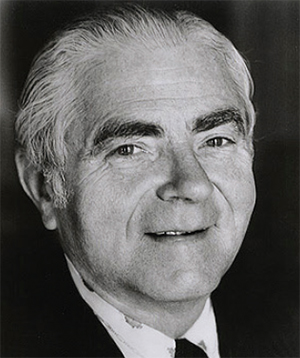Trending
This month in real estate history

1974: City, state tout $6B Harlem housing plan
New York City and state officials said they would spend $6.6 billion over 10 years to build or rehabilitate 51,200 apartment units in Harlem, which amounted to nearly a quarter of the entire housing stock in the neighborhood, 40 years ago this month.
The ambitious plan was the latest in a series of initiatives intended to clean up the once vibrant area, which had fallen into a steep decline.
Previous revitalization ideas were advanced after riots in 1935 and 1943. In 1965, Columbia University’s School of Architecture, in concert with District Planning Board 10, suggested new plans, and then another set of proposals was part of the 1969 citywide master plan.
The 1974 plan was put forth by Edward Logue, the president of the state’s Urban Development Corp., and Mayor Abraham Beame, who formed a new Mayoral Office of Upper Manhattan Community Planning and Development to advance the proposal.
It called for 33,400 new housing units over the next decade, at a cost of $1.5 billion, and rehabilitation of 17,800 units, at a cost of $445 million. The plan also envisioned community facilities, as well as commercial and industrial development.
The program never reached those lofty goals. In fact, by 1978, the situation had deteriorated. Harlem leaders at the time said the neighborhood was in worse condition than ever. Some 3,000 housing units were lost each year since the plan was announced to decay, arson or abandonment. And because of heavy federal cutbacks in 1974, none were being replaced.
1945: REBNY opposes WWII vets’ temporary housing
The city’s leading real estate industry association criticized a plan backed by the popular wartime mayor, Fiorello La Guardia, to build temporary housing for returning World War II veterans, 69 years ago this month.
A top executive from the trade group the Real Estate Board of New York said the plan for non-permanent emergency structures would lead to more poverty-stricken neighborhoods.
However, the city and the federal government joined to develop eight temporary housing complexes with space for 8,300 families, built in barracks-style structures called Quonset huts, as well as prefabricated homes. The rents were about $31 per month.
The city provided the locations, and the federal government built the structures. The projects included locations that became the Bruckner and Castle Hill houses in the Bronx; the Juniper Valley, Northern Boulevard and Rego Park houses in Queens, and the Jamaica Bay, Ulmer Park and Linden houses in Brooklyn. The bulk of the homes were demolished in the 1950s as permanent housing was developed.
1922: Publisher heads to Midtown after 105 years
The large book publisher Harper & Brothers announced it would leave Lower Manhattan for Midtown 92 years ago this month, part of a long-running uptown migration of the media from the cramped confines at the southern tip of Manhattan.
The firm was leaving its well-known two-building complex at 331 Pearl Street on Franklin Square near the Brooklyn Bridge, and heading to a new six-story structure at 49 East 33rd Street, between Park and Madison avenues.
Siblings James and John Harper founded the company as J. & J. Harper in 1817, at first located in a small building near the waterfront on Dover Street. The printers moved a few blocks north to 82 Cliff Street. Then two more siblings joined in 1833, and the firm was renamed Harper & Brothers.
In 1850 they added to the Cliff Street address with the construction of the five-story 331 Pearl Street, which became the main office for the publisher for 72 years. The property is now occupied by a large apartment complex.
Harper & Brothers, following several mergers, is now known as HarperCollins Publishers and is a division of Rupert Murdoch’s News Corp. Earlier this year, the publisher left Midtown and returned to Lower Manhattan. Now located in the skyscraper 195 Broadway, between Fulton and Dey streets, it was, ironically, part of a new migration of media businesses south from Midtown.






